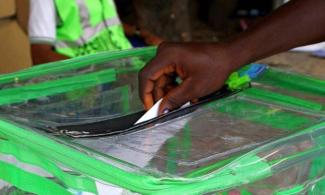
The commission consequently decided that it would use the voter register of 2,210,334 people that registered to vote in the 2019 presidential election.
Voters in Edo State will go to the polls this Saturday to elect a governor. They will face a similar choice as four years ago when Godwin Obaseki and Osagie Ize-Iyamu were the leading candidates for the governorship. Obaseki defeated Ize-Iyamu and had since governed the state.
Both are competing again as the leading candidates in the Saturday’s governorship election after swapping political parties. In 2016, Obaseki was the candidate of All Progressives Congress while his opponent contested on the Peoples Democratic Party platform. Now Obaseki is seeking reelection on the platform of the PDP while Ize-Iyamu is APC’s candidate. The moves have raised the ante about the election.
Beyond the political rivalry between Obaseki and Ize-Iyamu, voters want a governor that will uplift the state. In this regard, it is essential to examine the prospect of the winner and the issues surrounding the election.

Students make up the biggest voting group
Students make up the highest percentage of registered voters in 16 out of the 18 local government areas in the state. But the majority of those with permanent voter’s cards are in the north senatorial district of the state. In the south and central senatorial districts, 78 per cent of those who registered were able to collect their PVCs before COVID-19 forced a lockdown across the country. Voters with PVC are six per cent more in the north senatorial district, represented at the Senate by Francis Alimikhena of the APC.
On the other side of the coin, most of those who are likely to be disenfranchised will come from Edo South. The highest proportion of registered voters in the state – 58 per cent – are from the southern part of the state, according to data by election observer, YIAGA. Matthew Uroghide of the PDP represents Edo South.
The Independent National Electoral Commission blamed COVID-19 for the inability to distribute 483,868 permanent voter’s cards. This would disproportionately affect voters from the south senatorial district.
Aside from the failure to distribute PVCs, INEC failed to register more eligible voters.
The commission consequently decided that it would use the voter register of 2,210,334 people that registered to vote in the 2019 presidential election.
Voting pattern in Edo
With the return of democracy in 1999, more than 70 per cent of the 1,380,418 who registered voters cast their ballots in the 1999 governorship election. In 2003, the number of registered voters grew to 1,432,891, with 78 per cent casting their votes.
There was a slight decline in voter registration leading up to the keenly contested 2007 governorship election in the state. The figure declined from 1.4 million in 2003 to 1,345,410, a drop of six per cent. However, voter turnout increased from 78 per cent to 83 per cent. A total of 1,116,690 voters participated in the elections in which Adams Oshiomhole lost, but the court later declared him the rightful winner of the election.
After Oshiomhole’s first term in office, voters in the state showed apathy. Although 1.6 million voters registered, just 667,993 showed up to be accredited to vote in the 2012 election that Oshiomhole won for his second term.
In 2016, only 32.7 per cent of the 1.9 million registered voters went to the polls. This was a 10 per cent drop compared to voters’ turnout in 2012.
Although this is the first governorship election that Nigeria has to conduct during a pandemic, the rules have been relaxed to a point where rallies have been held without any care for social distancing.
Whether many Nigerians from Edo State will be interested in forming socially distanced queues on Saturday is an outcome that would be known latest on Sunday. As the data shows, before the pandemic took hold, the people of the Old Bendel State had become uninterested in who occupies the government house.
Tension and violence build up
Between July and August, there were at least three alleged murder attempts on two government officials.
The state’s Commissioner for Youth, Damian Lawani, had his house shot at on July 21 and vandalised on August 9.
Sixteen days later, the residence of the chairperson of Owan East Local Government Council, Andrew Osigwe, was sprayed with bullets.
The convoy of the incumbent governor, Godwin Obaseki, was attacked in Apana, in Etsako West, as even the palace of the Oba of Benin was not spared.
A skirmish occurred outside the traditional capital of the Benin kingdom during a visit by Obaseki and some other governors.
Reacting to the attack on Lawani’s house, Obaseki said, “We will continue to pursue peace. We will continue to try and use the apparatus of the state. I hope that those who have responsibility for security in this country will understand the danger they are putting the country and the state into if they continue to turn a blind eye to the violence being perpetrated by Comrade Oshiomhole in Edo State.
“Nobody should blame the people of the state if they have to resort to legitimate means to defend themselves, because it is getting out of hand.”
As the police have been unable to prevent these attacks, both parties have continued to blame each other for the violence that is threatening the election.